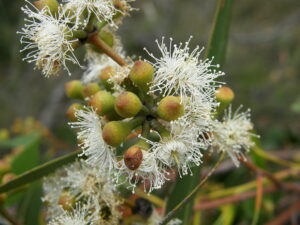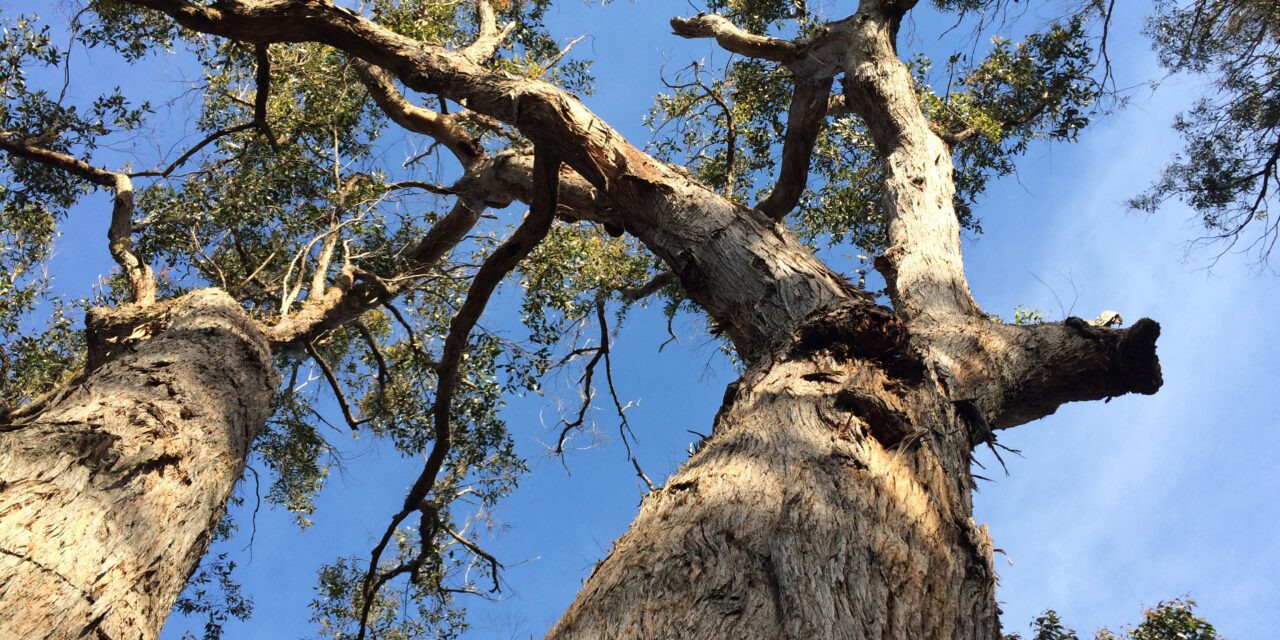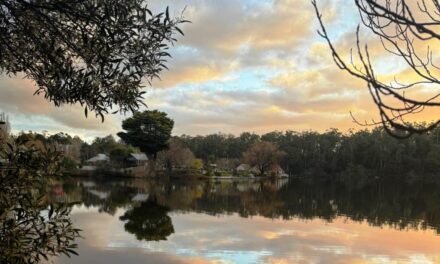Tanya Loos
It has been a very unusual summer indeed, but one of the best things about it has been the remarkable mass flowering event of messmates in the region. On still days, the air has smelt of rich honey and if you have the opportunity to look across the horizon, you can see the forested hills are peppered with white blossoms!
Like many eucalypts Messmates do not flower every year – instead they flower periodically depending on the conditions. The last time we had a bumper flowering event was back in 2017. But this season takes the cake. Locals who have lived in these forests for over thirty years say they have never seen anything like it!

OLYMPUS DIGITAL CAMERA
A Messmate is a type of Eucalyptus tree, colloquially known as a stringybark due to its fibrous stringy bark. Some people call them Messmate Stringybarks to distinguish them from other stringybarks such as Red Stringybark, another local tree. Messmates love high rainfall, fertile soils and seem to thrive in the cold. I find the Messmate, Manna Gum, Blackwood, and Silver Wattle combination of the Wombat Forest beautiful to behold.
The Messmate was the first Eucalyptus to be described by Europeans, described by a botanist by the name of L’Heritier from specimens collected from Bruny Island in 1777, during Captain James Cook’s third Pacific expedition. It was named Eucalyptus obliqua after the Latin obliquus, meaning oblique. This refers to the distinctive uneven join of the leaf margins to the leaf stalk. I used to think this was an identifying feature – but there are actually many Eucalypts with this leaf pattern.
So how does one identify the Messmate? If it is a rough barked tree, with rough bark all the way to the ends of the branches, find some of the fruit, or the gum nuts. If they are smooth and shaped like a wine glass, or wine barrel, it is a messmate. If the gum nuts have three pointed bits sticking up from inside the “barrel” it is likely to be a Red Stringybark, a stringybark gum which is common in Hepburn and drier areas of the shire.
Messmates have a wide distribution, occupying most of Tasmania, and the wetter cooler regions of Queensland, New South Wales, Victoria and westwards as far as Kangaroo Island. Their size and shape depends greatly on their habitat – from a twisted 2 metre high tree on an exposed coastal bluff, to a massive tree of almost 90 metres in a sheltered situation in Tasmania.
But let’s talk about the flowers! These distinctive blossoms do not have petals, but are instead little pom poms of stamens. The flowers are massed in large frothy bunches at the outside of the tree’s canopy. This enables pollinators easy access to the rich nectar and pollen resources. And what an array of pollinators! From tiny native bees, hoverflies and miniscule beetles to larger animals including parrots such as Musk Lorikeets. In over 20 years I have never heard or seen so many lorikeets locally. Harder to see and identify, there may also have been the tiny Purple-crowned Lorikeet amongst the blossoms.
The pale colour of the flowers allows for easy visibility at night – so pollination is actually a 24 hour affair. Moths and night flying beetles, Eastern Pygmy Possums and even Grey-headed Flying-foxes are likely to have enjoyed this strange summer’s bounty.
Here is a good source for information on messmates https://www.eucalyptaustralia.org.au/resources/eucalypt-resources/
Tanya Loos is a local naturalist, author and environmental consultant who loves to work in the environmental not-for-profit sector. She is the author of “Daylesford Nature Diary” available from her website or from Paradise Books in Vincent Street, Daylesford.
Have you got any nature questions for Tanya? Send them in!











